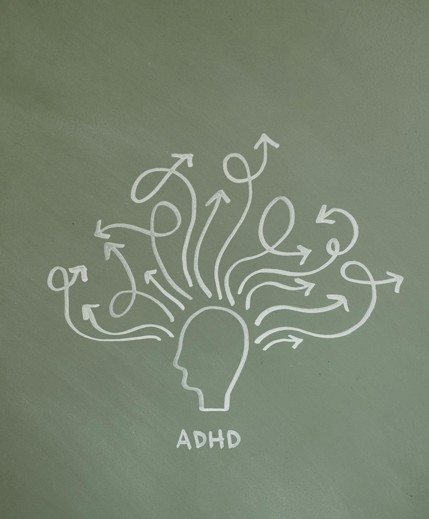Summary: Migraine headaches are neurological events that go beyond typical head pain, often causing symptoms like nausea, sensitivity to light and sound, visual disturbances (aura), and even dizziness. Common causes and triggers include stress, hormonal changes, lack of sleep, dehydration, and certain foods. Treatment typically involves both acute medications (like triptans or NSAIDs) and long-term prevention methods such as daily prescriptions, Botox, or lifestyle changes. You should see a doctor if your migraines become frequent, more intense, or interfere with your daily life. Understanding your symptoms, triggers, and treatment options is key to effective migraine management.
Key Takeaways:
- Migraine headaches are neurological, not just “bad headaches.”
- Symptoms include throbbing pain, nausea, sensitivity, aura, and migraine-associated dizziness.
- Common triggers include stress, light, hormones, and diet.
- Treatments range from acute meds to daily preventives and lifestyle changes.
- If your migraines are worsening or frequent, see a doctor.
When Migraine Pain Becomes Personal—and What You Can Do About It
It usually starts with a whisper—a twinge above the eye, a flicker in your vision, a subtle throb in the back of your head. And then suddenly, it crashes into your day like a tidal wave. Lights are unbearable, sounds are sharp, and every heartbeat feels like a jackhammer in your skull.
If this sounds familiar, you’re not alone. Migraine headaches affect over 1 billion people globally, yet they’re still misunderstood, misdiagnosed, and often minimized as “just a bad headache.” But for those who experience them, migraines are anything but minor.
That’s part of our core mission: to advocate for deeper understanding, better treatments, and compassionate care for those affected by neurological disorders—migraines included. In this blog, we’ll unpack the biology, symptoms, treatment options, and special circumstances surrounding migraines, while helping you understand when to seek medical help—and where to find support when you need it most.
What Are Migraine Headaches?
Let’s clear something up: migraine headaches are not regular. They are neurological events that affect how your brain processes sensory input and pain.
Common symptoms of migraine headaches include:
- Throbbing or pulsating pain, often on one side of the head
- Nausea or vomiting
- Sensitivity to light, sound, and smells
- Visual disturbances, known as aura (like flashing lights or blind spots)
- Migraine-associated dizziness symptoms, where balance and perception feel “off”
There are several types of migraine headaches, including:
- Ocular migraines, which can cause a “one eye migraine headache,” which distorts vision without head pain
- Chronic migraines, where attacks occur 15 or more days per month
- Complex migraines, which may involve speech or motor changes
- Allergy migraine headaches, which may be triggered by environmental allergens
One of the most overlooked distinctions is the difference between a headache and a migraine. Migraines often involve multiple sensory disruptions and are typically more debilitating than other headache types.
What Causes Migraine Headaches?
The exact cause of migraines isn’t fully understood (yet), but science has uncovered a lot. Migraines seem to be the result of abnormal brain activity affecting nerve signals, chemicals, and blood vessels.
Several known causes and triggers include:
- Hormonal shifts, particularly in women
- Stress or anxiety
- Sleep disturbances
- Dehydration or missed meals
- Sensory triggers like flashing lights or strong smells
- Foods such as aged cheese, red wine, or chocolate
- Genetics—if migraines run in your family, you’re more likely to experience them.
One of the most overlooked distinctions is the difference between a headache and migraine. Migraines often involve multiple sensory disruptions and are typically more debilitating than other headache types.
Migraines also often co-occur with conditions like depression, epilepsy, fibromyalgia, and gastrointestinal disorders. In fact, comorbidities are so common that treating one condition without addressing the other may not be effective.
Some individuals experience migraines specifically during their menstrual cycle. Known as migraine headaches and menstruation or menstrual migraines, estrogen fluctuations often trigger these.
When Should You See a Doctor for Migraines?
Too many people suffer in silence, thinking migraines are “just something to deal with.” But if your migraines are frequent, intense, or changing over time, it’s absolutely worth getting evaluated by a doctor.
You should see a healthcare provider if:
- You’re having more than four migraines per month
- You experience sudden or severe headaches, unlike your usual pattern
- Your migraines include aura, vision loss, or neurological symptoms
- You have headaches after injury, or they worsen with time
- Your migraines are interfering with daily life, work, or sleep
Even if you’ve been dealing with migraines for years, new symptoms deserve attention. A proper diagnosis can open the door to more effective and personalized treatment.
How You Can Treat Your Migraine
Managing migraine headaches involves two main goals: stopping the pain once it starts and reducing the number of attacks. Most treatment plans include a mix of acute (as-needed) therapies and preventive (long-term) strategies. The best treatment for migraine headaches usually involves a combination of medical and lifestyle approaches.
Acute Treatments (for immediate relief):
- NSAIDs (like ibuprofen or naproxen)
- Triptans, which target serotonin receptors to reduce pain
- Anti-nausea medications
- Rest in a dark, quiet room
- Ice packs applied to the head or neck
Preventive Treatments (for reducing frequency):
- Daily medications such as beta-blockers, anticonvulsants, or CGRP inhibitors
- Botox injections are approved for chronic migraine
- Neuromodulation devices, which deliver electrical stimulation to nerves
- Lifestyle adjustments: improving sleep hygiene, hydration, regular meals, and stress management
Every person’s migraine profile is different, so treatments often involve some trial and error. But research is evolving quickly. Thanks to advances supported by organizations like the Brain Research Foundation, we’re getting closer to targeted, effective migraine therapies, such as Robert R. Parrish’s study: “The Role of Chloride Loading in Seizure Termination.”
What Makes Some Migraines More Complex?
Migraine headaches can become even more challenging when combined with other health issues. This is where comorbidities come into play.
Some people with migraines also experience:
- Depression or anxiety
- Epilepsy
- Vestibular disorders (leading to vertigo and balance problems)
- Hormonal disorders (like PCOS or thyroid conditions)
Women in particular may suffer from menstrual migraines, which occur around ovulation or menstruation due to hormonal fluctuations. And yes, children can get migraines too, often without the classic head pain. Pediatric migraines might show up as unexplained stomach pain, mood swings, or fatigue.
That’s why it’s so important to consider the whole person when treating migraines—not just the headache itself.
Resources and Support You Can Trust
You don’t have to figure this out on your own. If you or someone you love is living with migraines, organizations, blogs, and communities are ready to support you. Here are a few trusted resources:
- Brain Research Foundation – Supporting groundbreaking neuroscience, including migraine research
- American Migraine Foundation – Offers medical expertise and patient resources
- Migraine Again – A supportive community with real-life tips and insights
- The Migraine Trust – Advocacy, research, and education based in the UK
- National Headache Foundation – One of the oldest U.S. organizations dedicated to headache disorders
Reading blogs from others who live with migraines can also help you feel seen and understood—and sometimes, that’s the first step toward healing.
You’re Not Alone in This – It Takes A Community
If you’ve ever had to call in sick, cancel plans, or retreat to a dark room because of a migraine, you know it’s more than “just a headache.” It’s a life-interrupting condition that deserves attention, empathy, and research.
The good news? You’re not alone. And there’s real help available—from your doctor, migraine researchers, and communities that understand what you’re going through.
But the research is not over. There is still progress to be made. Our team at Brain Research Foundation is committed to funding the science that leads to relief, with the hopes of creating medication to eradicate this condition.
However, it takes a community. Support our research in creating medication to eliminate this condition by donating today so that we can have a better future for the next generation. You can also read more about where your money is going by visiting our seed grants page. On this page, you will find information about the various brain research projects we sponsor.


